Aluminum die casts are popular in many industries due to their impeccable properties such as tensile strength, durability, and lightweight. However, there can be a need for some enhancement of these properties for specific applications, whether aesthetics or function-related. To improve these properties, aluminum casting finishing is essential.
There are many finishing options used in aluminum die casting. However, choosing any should depend on the proper understanding of the effects on aluminum, the efficiency and productivity, and how it adds to the aluminum die casting cost. This article will discuss the different surface finishing you can use for an aluminum die-cast part.
Common Surface Finishing Options for Aluminum Die Castings
Although several finishing options are suitable for aluminum die castings, some are more popular than others due to their advantages. Below are the common aluminum casting finishing methods you can use in your project.
· Anodizing
Anodizing is a surface treatment applicable in decorating and improving the functional properties of nonferrous materials such as aluminum, magnesium, and zinc. It is an electrochemical process, making the metal durable and corrosion/scratch-resistant. There are three types of aluminum anodizing, namely Type I, Type II, and Type III. Below is the general procedure for using it with aluminum:
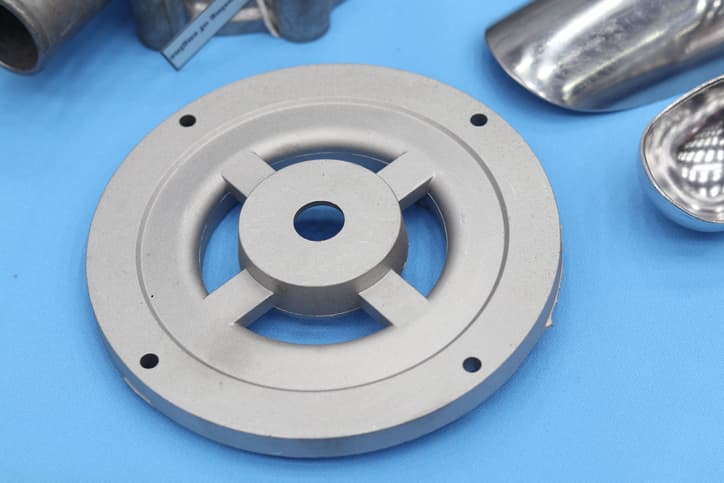
- Cleaning: The aluminum die-cast is cleaned to remove impurities that can affect the process’s quality.
- Placement: The cast part is placed into a bath containing an electrolytic solution. The electrolytic solution depends on the type of anodizing method you are using.
- Apply current: Direct current is passed through the bath, creating pores on the aluminum die casting. The negatively charged O2- forms aluminum oxide, acting as the die cast aluminum surface finish.
Anodizing is a simple yet cost-effective process. Hence, it is very popular in the automotive, food, and electrical industries. Depending on the electrolytic solution you use and the amount of current passed, there are different types of anodizing;
– Type 1 Anodizing
This anodizing uses chromic acid and can create the thinnest anodic oxide surface (at least 0.0001inches). Aluminum die casts subjected to this process are carrion resistant and slightly dyeable.
– Type 2 Anodizing
This process involves sulfuric acid, which is stronger and creates a thicker surface (about 0.0002 – 0.001). Aluminum die casting subjected to this anodizing becomes corrosion resistant and is highly dyeable.
– Type 3 or Hardcoat Anodizing
This also uses sulfuric acid but a higher electric current. Hence die casts subjected to this anodizing have thicker anodic oxide layers (>0.001), are corrosion and abrasion-resistant, and with the highest dyeing potential.
· Electroplating
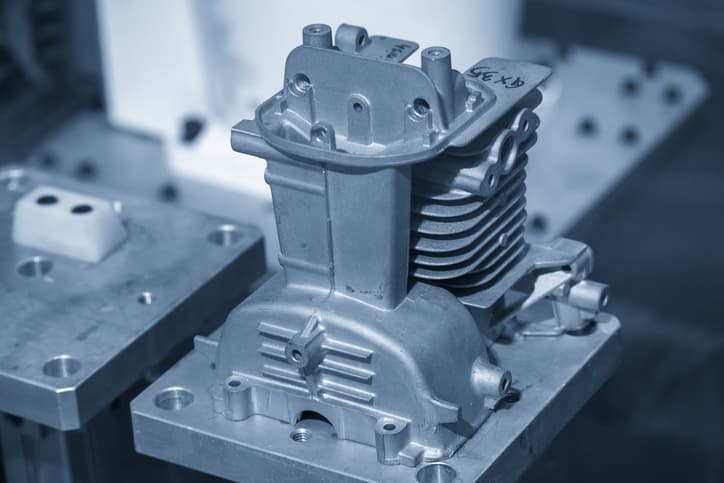
This procedure involves forming a thin metallic coating on the surface of a product, either metal or non-metal, by passing it through an electrolytic setup. When used for aluminum die casting, the die casting is the cathode. It is then placed in a solution containing dissolved metal ions such as cadmium, zinc, etc. These dissolved metal ions from the layer on the die-cast on passing currents through the solution.
Electroplating is common industrially and non-industrially due to being a major topic in chemistry. Industrially, it offers an effective way of improving the functionality and aesthetics of different products. Hence it is applicable in aluminum die cast surface finishing due to its customizability and suitability for large parts.
· Chrome Plating
Chrome plating is an electroplating process that uses chromium as the metal deposited on the die cast. The electrolytic setup comprises the die cast as the cathode, chromium as the anode, and dissolved chromium ions as the solution. The procedure includes the following stages:
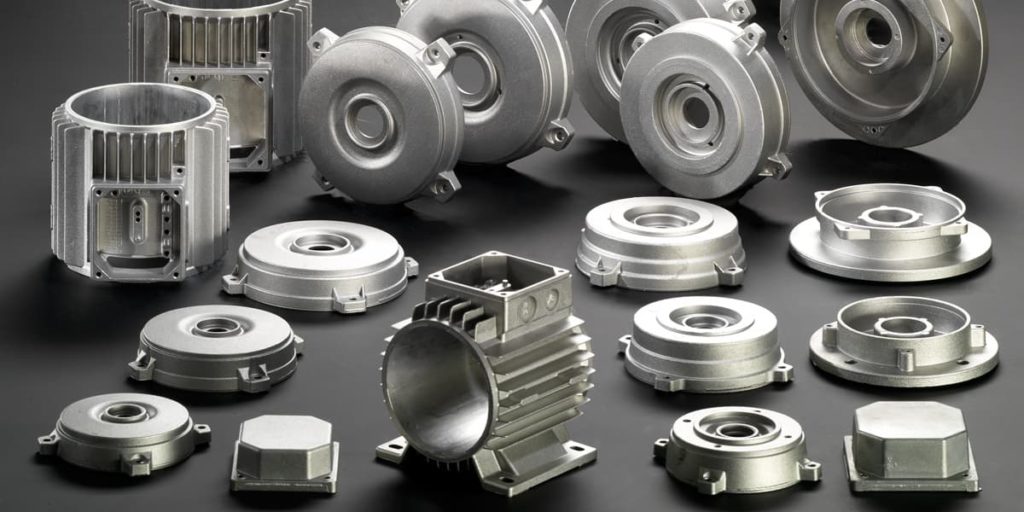
- Cleaning the aluminum die cast to remove materials such as grease and dirt that can affect the end product’s quality
- Placing the die cast in a chrome plating vat to warm to solution temperature
- Passing current for the required time to plate according to the desired thickness
There are two types of chrome plating depending on the environment where it will be used: Below is an explanation of when used as an aluminum casting finishing option.
– Hard Chrome Plating
This industrial process forms a thicker layer (between 0.02 to 0.04mm) and is more used for improving the functionality of the die casts. Functional improvements include an increase in hardness, chemical inertness, and prurience.
– Decorative Chrome Plating
This chrome plating involves applying for an undimmed nickel plate before the chromium. It produces thickness between 0.002mm to 0.02mm and is commonly applicable in part’s aesthetic improvements related to reflective properties and smoothness. Also, it protects the materials from corrosion and abrasion. Moreover, it adds several advantages due to the inherent properties of chromium itself (aesthetic appeal) evident in die casts subjected to the surface treatment.
· Powder Coating
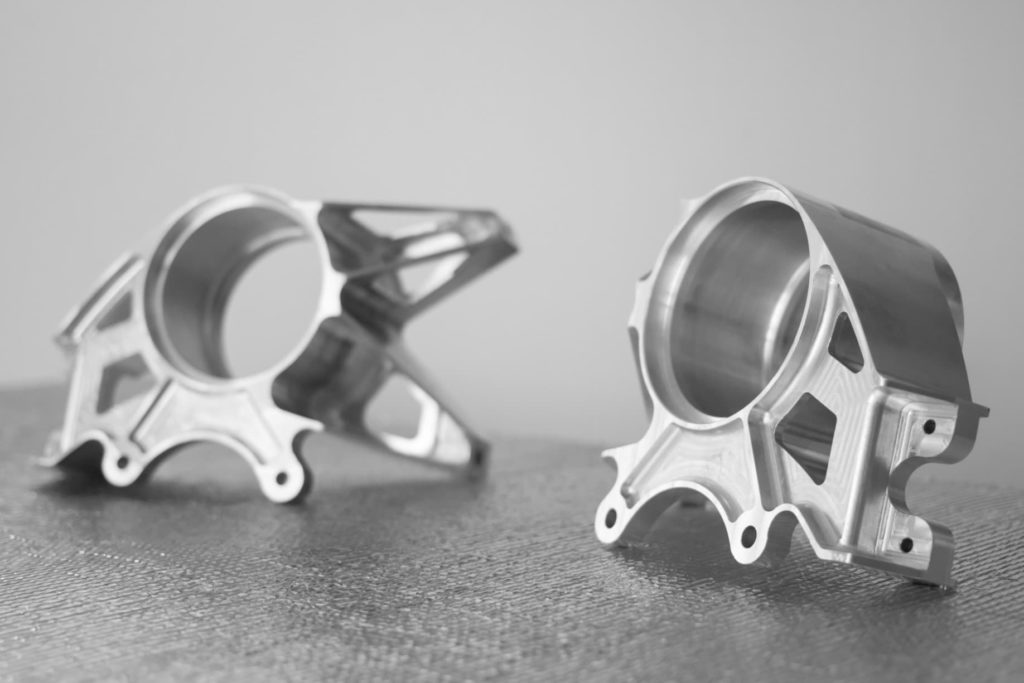
Powder coating is a procedure that involves the electrostatic application of dry powders on material and curing using heat. The material you want to work with will undergo preparation to help the powder’s adhesion to its surface. The workpiece is then coated using the spray gun and cured using heat. There are two types of powder coating finishing depending on the type of plastics.
– Thermoplastic powder coating
This uses thermoplastics which become soft on heating, thereby eliminating chemical bonding. This type of powder coating is reversible and hence reusable.
– Thermoset coatings powder coating
This uses thermosets plastic that becomes soft on heating but forms chemical bonds that harden irreversibly when they set. They are thicker and more durable when compared to thermoplastic coatings.
Can’t tell the thermoplastic and thermoset? We have an article that explains the differences between thermoset and thermoplastic.
Powder coating is used in aluminum casting finishing as it produces high-quality finishes it is flexible. It also impacts the functionality and aesthetics, making it scratch, resistant.
· Polishing
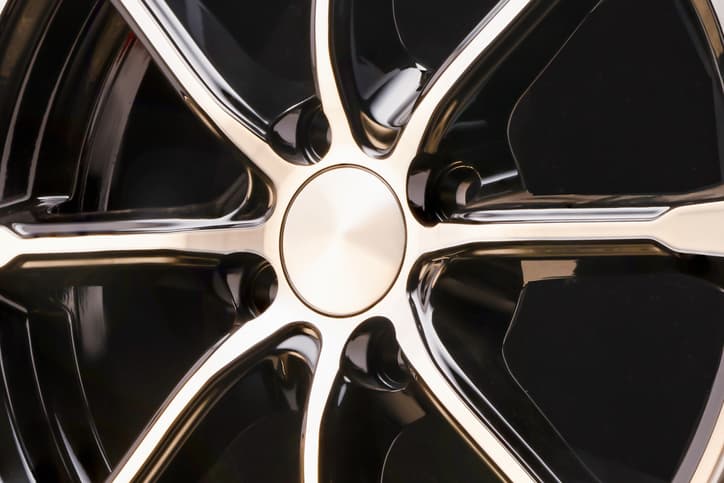
Polishing is a surface treatment procedure that involves using an abrasive material to finish the surface of the aluminum die cast. This improves shine and luster as the polished surface now has a mirror-bright finish. Polishing comprises several steps, including:
- Roughing: This is important in the removal of defects on the aluminum die cast
- Polishing: This is the actual polishing stage for smoothing the metal surface.
- Brightening: Polishing leads to the formation of nuanced surface
- Protection: You can protect the final finish by applying wax.
There are different types of polishing finishing options depending on the material you are working with. For example, automatic or robotic polishing is ideal for hard metals, while manual polishing is suitable for softer ones as they require a careful and human-control process
General Steps of Aluminum Die Casting Finish Process
Aluminum die casting finishing all have general steps. Below is a stepwise procedure for subjecting such parts to surface treatments.
· Stage #1: Deburring
After casting the aluminum product, the die cast undergoes deburring to remove unwanted sharp edges, burrs, flash, and debris. At the end of this stage, you should have a smooth and bright surface
· Stage #2: Conversion Function Coating
After deburring the aluminum die cast, a conversion coating is applied. This helps remove remaining oil, agents, and other contaminants that can affect the quality of the surface finishes. Aside from preparing the product for the surface finish, it can also be a pre-step for certain surface finishing options such as painting. You can also use it as a final finish.
· Stage #3: Final Surface Finishing
Use several surface finishing options to improve the die-cast product’s durability, corrosion and heat resistance, surface performance, and insulation. Each surface finishing option has advantages and should be properly analyzed before selection.
Reasons for Applying Finishing on Aluminum Die Cast Parts
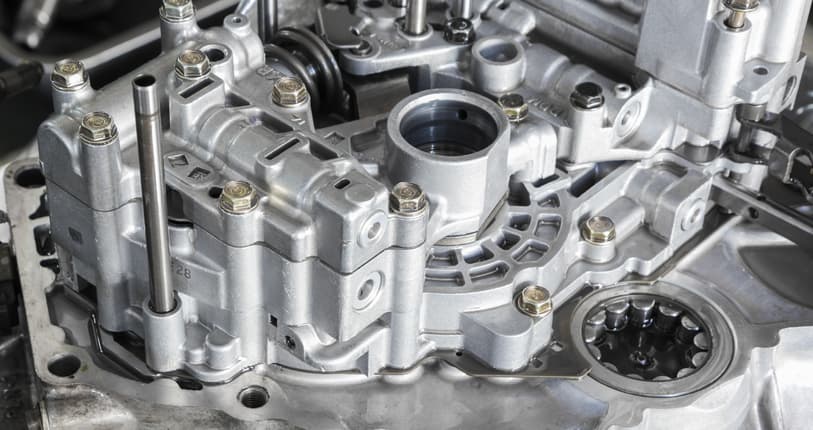
Aluminum die casts have inherent properties such as high strength-to-weight ratio, durability, corrosion resistance, and lightweight. Consequently, they are an important part of several industries. With cast aluminum finishes, it is possible to enhance these properties making the material functionally and aesthetically appealing. Below are the exciting benefits of surface finishes include:
· It Enhances Aesthetics
The aesthetics of the aluminum die cast is as important in its functionality as it is the first thing that attracts people. Using any of the surface finishing options above, you can improve the aesthetics to seem pleasing to your clients. For example, you can use electroplating to add chromium, known for its bright and enticing color.
· Corrosion Resistance
Aluminum is corrosion resistant in the atmosphere but loses this property in aqueous conditions. Finishing can improve the corrosion resistance and protect the product to last longer.
· Chemical Inertness
Aluminum is not inert chemically and can form several compounds exposed to different chemicals. A proper surface finishing will increase the surface resistance to chemicals, protecting it from chemical attacks.
· Tensile Strength
If the durability of the aluminum part is not enough for its function, you can use surface finishing techniques such as electroplating to improve it. With electroplating, you can plate a stronger material on the die cast, making it better.
Choose Your Die Casting Services
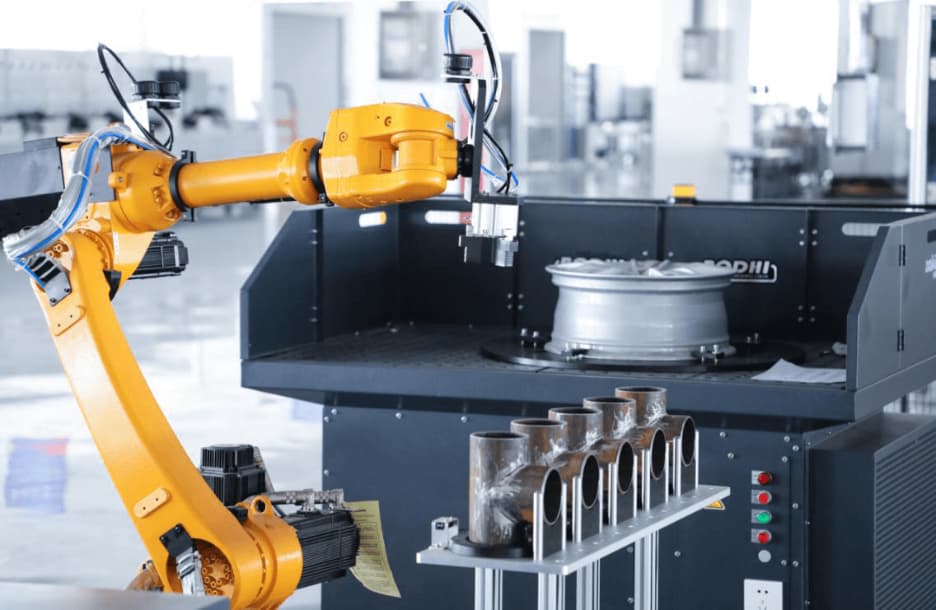
RapidDirect offers custom die casting services and several surface finishing options so that you can completely manufacture various parts with ease. Our engineers are strategic and creative experts that deliver the best affordable service.
We are ISO 9001:2015 certified and can build your die-cast parts to meet industrial standards using our automated machines and robots built with futuristic technology. We have many manufacturing plants and facilities. By choosing us, you enjoy up to a 30% price reduction. Upload your design file for a quote and DfM analysis within 12 hours.
Conclusion
Aluminum die casts are popular in many industrial capacities due to the inherent material’s unique properties. For example, the aerospace industry favors its use due to its lightweight without losing tensile strength. Before quoting, the aluminum casting finishing option is something the purchaser and die caster must discuss and agree on. This article introduced aluminum parts’ different surface finishing options and advantages. Do you have a question related to any of them? Kindly reach out to our team of experts.
FAQs Related to Aluminum Casting Finishing
Anodizing is the best of the three aluminum casting finishing options because of abrasion resistance. It doesn’t peel off and gives aluminum a deeper, richer metallic appearance. However, you can choose the other options when looking at other factors such as cost, ease of operation, etc.
Yes, you can polish aluminum die casts that already look dull or tarnished over time to a mirror finish that looks brand new. You can use manual or automatic polishing for the best effect.
Yes, you can only use polyurethane on the aluminum die cast if you sand and prime the surface using a self-etching primer before applying the plastic. Without this, the Polyurethane finish won’t stick to aluminum surfaces.


